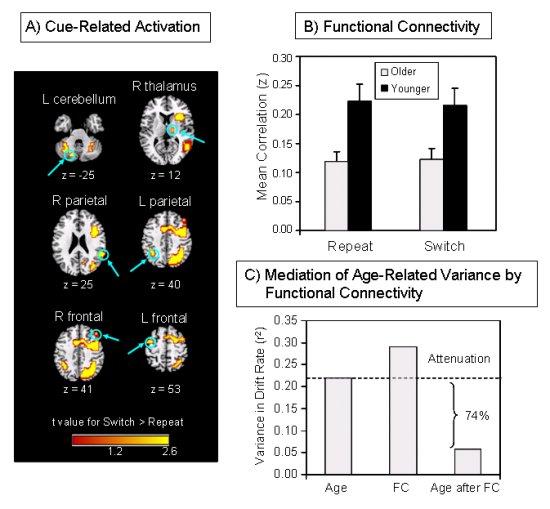
BIAC faculty David Madden and colleagues used functional magnetic resonance imaging (fMRI), and diffusion tensor imaging (DTI), to examine adult age differences in task switching across adjacent trials (i.e., local task switching). During fMRI scanning, participants performed a cued, word categorization task. From interspersed cue-only trials, switch-related processing associated with the cue was estimated separately from the target. Cue-related activation, associated with task switching, occurred within a distributed frontoparietal network (Panel A). The magnitude of event-related activation for task switching was similar for younger adults (n = 20; 18-27 years) and older adults (n = 20; 60-85 years). Critically, the functional connectivity of switch-related regions, during cue processing, was higher for younger adults than for older adults (Panel B). Further, individual differences in cue-related functional connectivity shared a substantial portion of the age-related variability in the efficiency of target categorization response (Panel C). This age-related difference in functional connectivity, however, was independent of white matter integrity within task-relevant regions. These findings highlight the functional connectivity of frontoparietal activation as a potential source of age-related decline in executive control.
Citation: Madden DJ, Costello MC, Dennis NA, Davis SW, Shepler AM, Spaniol J, Bucur B, Cabeza R. Adult age differences in functional connectivity during executive control. Neuroimage. 2010 Aug 15;52(2):643-57. doi: 10.1016/j.neuroimage.2010.04.249. Epub 2010 Apr 29. PMID: 20434565; PMCID: PMC2902259.
